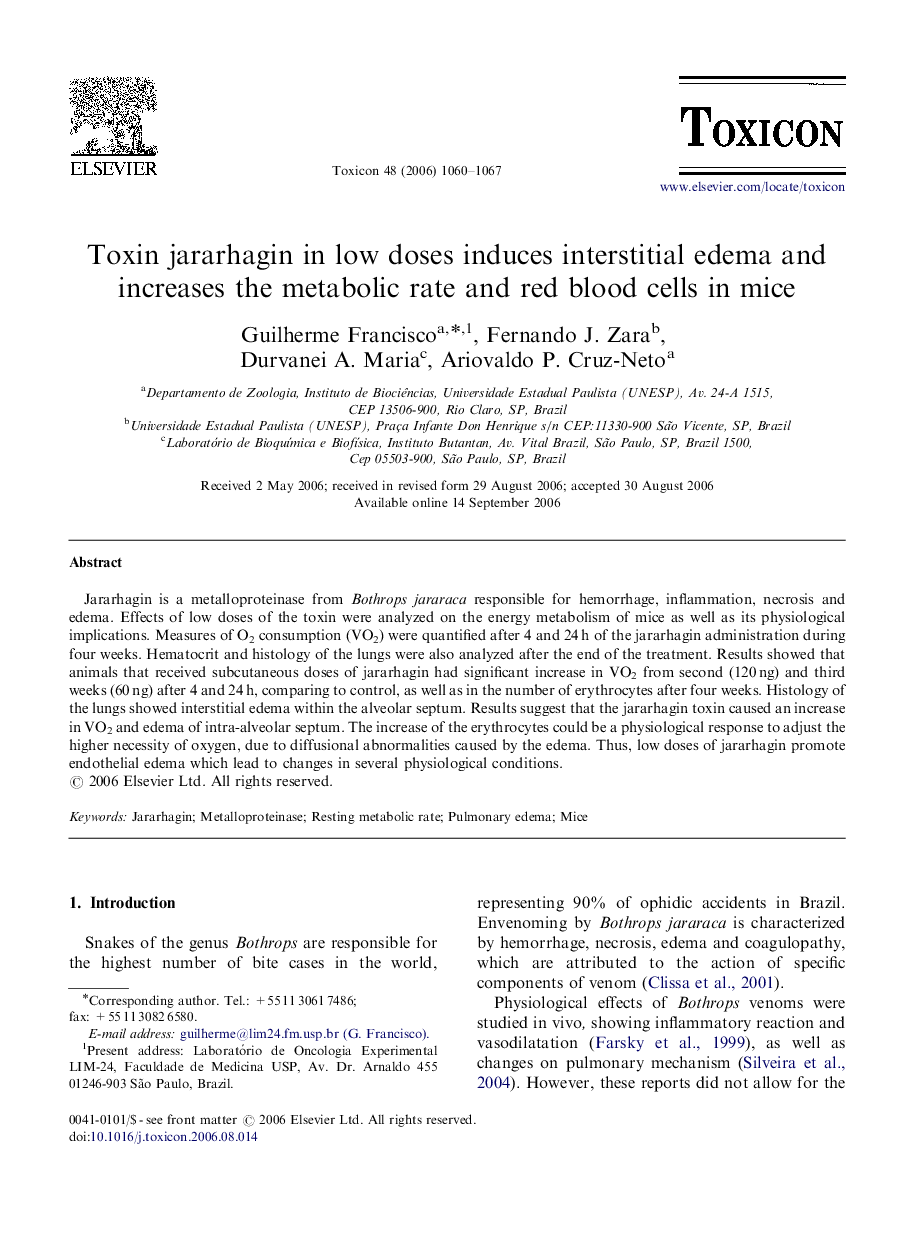| Article ID | Journal | Published Year | Pages | File Type |
|---|---|---|---|---|
| 2066102 | Toxicon | 2006 | 8 Pages |
Jararhagin is a metalloproteinase from Bothrops jararaca responsible for hemorrhage, inflammation, necrosis and edema. Effects of low doses of the toxin were analyzed on the energy metabolism of mice as well as its physiological implications. Measures of O2 consumption (VO2) were quantified after 4 and 24 h of the jararhagin administration during four weeks. Hematocrit and histology of the lungs were also analyzed after the end of the treatment. Results showed that animals that received subcutaneous doses of jararhagin had significant increase in VO2 from second (120 ng) and third weeks (60 ng) after 4 and 24 h, comparing to control, as well as in the number of erythrocytes after four weeks. Histology of the lungs showed interstitial edema within the alveolar septum. Results suggest that the jararhagin toxin caused an increase in VO2 and edema of intra-alveolar septum. The increase of the erythrocytes could be a physiological response to adjust the higher necessity of oxygen, due to diffusional abnormalities caused by the edema. Thus, low doses of jararhagin promote endothelial edema which lead to changes in several physiological conditions.
